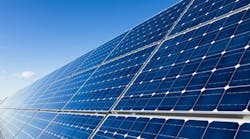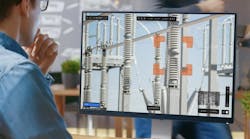I recently wrote an article on solar subsidies: Solar – Grow Up and Pay Up! And we are also running the poll: Time for Solar to Pay its Fair Share! We asked our expert panel to respond. Here’s what several said:
Recognize Opportunity
Instead of blaming our little brother (solar) for getting all of the family attention, we should recognize the unique rate base expansion opportunity for T&D. Rebuilding and tailoring the "smart grid" will enable full utilization of solar capacity, while allowing utilities to broaden their revenue stream. Instead of squeezing every last amp out of aging infrastructure, it is a good time to realize that flexible, real time, future that has been starved of adequate investment because of zero sum budget strategies embraced by many utilities. Utilities should now be approaching their regulators with robust "solar investment plans" that will enable solar and the grid of the future.
-Virgil Rose, Independent Consultant
Solar Investment Plans
Wise thoughts Virgil!. I've always thought we miss opportunities to raise the rate base through improvements and enhancements - including accommodating solar. After all, IOUs are (don't tell anyone) in the business of making money for investors and even public power is (at least should be) in the business of creating/maintaining an attractive business/living environment rather than grudgingly pinching every penny.
Rooftop solar is (like many things in our society) offered mostly to the moderately well-to-do at the expense of others not so lucky. That's where the tax breaks and other incentives get a little sticky. Utilities are in the right position to offer something different
I like your idea of utilities having robust "solar investment plans" - why not take the lead for a change.
-Paul Mauldin, Grid Optimization Editor
Common Sense Often Clouded
In terms of utility PV, I notice that Buffet's Nevada NV has bought 20 years of 100MW PV for US
In the case of the MIT study - the summary was illogical with respect to BOS costs (utility 65% residential 85%) and the recommendation that "federal R&D support should focus on fundamental research into novel technologies that hold promise for reducing both module and BOS costs". My understanding is that a significant part of the BoS is bureaucratic - I am thus interested to know how R&D will reduce this? And a big impact could be made quickly on the bureaucratic element (very high compared to Germany). Reduce this and the need for FiTs (Feed In Tariffs) disappears. This leaves what (net metering) rate the local utility should pay for power that is generated locally and used locally (working on the basis that owners of roof-top mounted PV are not charities).
Finally, distribution & transmission O&M costs are a separate matter and should be re-charged to customers at a fixed daily rate - reflecting the capacity of their connection. I'd suggest that most of the above are common-sense solutions on a subject (residential PV) where common sense is all too often clouded by vested interests. This applies as much in the UK (for example) as it does in the USA.
-Mike Parr, Systems Engineer UK DNO
What Are these Investments Really For?
I’ve heard some comments in meetings that many of the types of investments being done or needed to be done for renewable integration, smart grid, etc., don’t qualify as rate-based “recovery and return investments.” I don’t know particulars, e.g., what investments in which regulated jurisdictions, but I raise this thought as a question for correction or amplification among us. I suspect that the types of investments in this category are for power electronics, system modeling, etc., or might be their stated purposes. I also suspect that this experience is more common in distribution than transmission. Thoughts? Comments.
Adapt and Succeed, or Stagnate and Die
Following up on what Virgil and Paul said: Yes, why not take the lead for a change? Continuing to bash solar is a mug’s game, a tactic that will only delay the inevitable – at great cost and then only for some regions of the country. Sure, solar and DER have been disruptive for the industry, and they create tough issues that must be resolved – after a thorough analysis of all the costs and benefits, of course – but that’s the American Way: Adapt and succeed, or stagnate and die. A friend who recently wrote “The Sixth Extinction” says creatures have to move about 30 feet a day toward the Poles or upslope if they are to track the climate. Some things are moving very fast; some are not. And it’s the same with utilities. If net metering is an existential threat to your business model, perhaps you need to develop a new business model.
-Lee Harrison, Contributing Writer
Subsidies No Longer Necessary
This is an interesting article, and one where I will attempt to keep my opinion as short as possible.
I am an advocate of alternative energy, not because of global warming, cost of oil/coal, or any of the typical reasons. I am for alternative energy strictly because we have these wonderful forces of nature we can use to power the devices that take electricity, so it needs to be explored and utilized. With that being said, for me there are two reasons I believe that government subsidies should no longer be offered as an encouragment for people to put up solar panels, wind towers, or any other device which uses alternative energy to produce power.
First, subsidies may have been necessary in the beginning as a way to promote and encourage the use of alternate energy, but those days should come to an end. Now that the majority of the population knows about alternative energy and the benefits it creates, let's see if it can sustain itself. If alternative energy is such a great deal, and people truly believe in it, then it will survive on its own.
Second, why should those who cannot afford alternative energy equipment, and those who do not believe in its benefits, be forced to pay for something that they cannot either afford or don't believe in. If I remember correctly, we live in a country which is considered the land of the free. Are we truly free if those who don't want alternative energy are forced to pay for it?
It is time to see if we as a society truly believe in the benefits of alternative energy. However, the true opinion of the public will not be seen as long as subsidies are offered. Let's face it, which one of you who read this article, and is currently reading this post, is willing to turn down free money?
-John Butler, Manager, Electrical Field Operations, Xcel Energy
Save the Planet or Ensure Reliability?
Good discussion on the financial and business aspects of the issue. Now let’s talk about technical issues that will have financial and regulatory implications.
First, some definitions:
Reliability: Quantification of historical and expected duration and frequency of electric utility power interruptions in a given area or at a given location for a given period of time.
Interruption: Total loss of electric power on, at least one normally energized conductor to one or more customers connected to the distribution portion of the system.
Power Quality: Fitness of electric power for use by consumer devices without significant negative effect on the functionality, efficiency or expected life of the devices.
We have learned how to build and manage a T&D system that provides superior reliability and power quality. According to the annual benchmarking study conducted by the IEEE Distribution Reliability Working Group, the average customer of the least reliable utility experienced 99.65% reliability in 2013. If you take out major events, they experienced 99.92% reliability. Average customers of the median utility experienced 99.96% reliability including major events. These reliability statistics apply to systems that do not yet have anywhere close to the proliferation of Distributed Energy Resources (DER) envisioned by many.
As engineers, we know that the introduction of DERs into the T&D system exponentially increases the complexity and the challenges to maintain reliability and power quality at the point of common coupling.
Ultimately, what the customer needs is reliability and power quality at the point of utilization, not just at the PCC.
Is the utility still going to be expected to take primary responsibility for reliability and power quality?
Will their responsibility end at the PCC?
What is the responsibility of the DER owner/operator?
If we are going to save the planet with a major expansion of renewable DERs, will we accept a tradeoff of reduced reliability and/or power quality?
Customers of cell phone companies seem to accept the fact that they have more dropped calls than they do power interruptions. And their cell phone bill is larger than their power bill.
Will the customers and regulators accept the extra cost of maintaining reliability and power quality in a much more complex system? Or will they accept a lower standard in order to keep costs down while saving the planet?
-J. David Lankutis, Senior Project Manager, POWER Engineers


